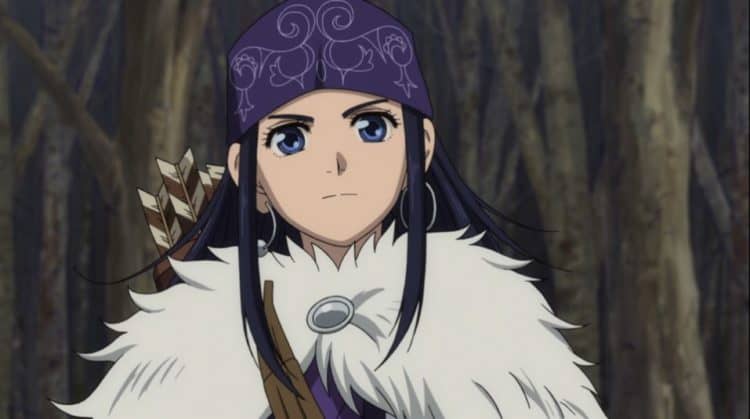
Golden Kamuy is a manga series that has since received an animated adaptation. On the whole, it seems safe to say that the animated adaptation has been successful at serving its intended aims, seeing as how a third season for the show has been announced. As for why people might want to watch Golden Kamuy if they are unfamiliar with it, well, there are a number of reasons for that. Why should you consider watching Golden Kamuy? Consider these examples:
Storyline that Connects with the Viewer
There are some shows that are fun because they have complex, convoluted storylines that invite interested individuals to examine them with both care and consideration in order to gain precious insight into what is going on behind the surface of things. In contrast, there are other shows that are simpler in nature but nonetheless perfectly capable of entertaining interested individuals under the right circumstances. It would be an exaggeration to say that Golden Kamuy is a simple story, not least because simple in that context has certain connotations that are less than complimentary in nature. However, Golden Kamuy does an excellent job of laying out the stakes for its main characters, which in turn, makes it that much easier for interested individuals to connect with them on a fundamental level. Something that makes their experiences that much more enjoyable to watch on the screen.
For those who are curious, Golden Kamuy is centered on the search for a hidden trove of Ainu gold. Unfortunately, the rumors of the hidden trove of Ainu gold are very strong, so much so that they have inspired multiple parties to head out into the region in hot pursuit. One of the main characters of Golden Kamuy is a Japanese veteran of the Russo-Japanese War named Saichi Sugimoto, who wants the gold so that he can take better care of his dead war buddy Toraji’s blind wife Umeko. Meanwhile, the other main character is a young Ainu girl named Asirpa, who is out for blood because she believes that her father was murdered by other individuals searching for the Ainu gold.
Unusual Choice of Genre
Content-wise, Golden Kamuy can be described using a number of meaningful labels. For example, it is an adventure show because it is centered on the search for hidden treasure, which is one of the most basic and thus one of the most common adventure plotlines ever. Likewise, Golden Kamuy can be described as a historical show as well because it is set in the early 20th century, which isn’t a period of Japanese history that comes up much in non-Japanese media. However, what is most interesting about Golden Kamuy is that it can be described as a Western, which can sound rather strange to those who are more familiar with more conventional examples of the genre.
In short, western tends to describe stories set in the Wild West, thus making them very American stories in a very American setting. However, it is important to note that Westerns have some very common elements that come up again and again, which can serve to make a story Western-like even if it isn’t literally set in the Wild West. One excellent example would be the concept of the frontier, thus making for not just human challenges but also natural challenges that must be overcome by the protagonists. Another excellent example would be the lawlessness of the frontier where the authority of the central government runs thin, meaning that the local inhabitants are much more reliant on themselves as well as their friends and family members in order to see justice done.
Golden Kamuy is set in the northernmost member of Japan’s four main islands, which is now called Hokkaido (https://en.wikipedia.org/wiki/Hokkaido). Said island wasn’t always Japanese. Instead, it was taken over by the Japanese central government in 1869, meaning that by the start of the series, it hasn’t been under Japanese central governmental control for more than a few decades’ time. Combined with the fact that the island was already populated by the Ainu, it isn’t exactly difficult to see how someone could draw comparisons between Golden Kamuy and Westerns set in the Wild West.
Unusual Choice of Setting
With that said, the choice of setting is very unusual as well, meaning that Golden Kamuy can offer interested individuals a fair amount of novelty if nothing else. For context, Golden Kamuy is set no more than a short time after the Russo-Japanese War from 1904 to 1905, which started up because the two empires had rival imperial ambitions in Korea as well as Manchuria that came into conflict with one another. Japan would emerge from the conflict as the clear military victor, which had profound consequences for world history. For instance, this was the moment that marked Japan as a power of note in the world, which was particularly remarkable because Japan was Asian rather than European. Moreover, this was one of the incidents that paved the way for the ultimate fall of the Russian Empire, seeing as how it was a massive humiliation that caused serious turmoil.
Having said that, Golden Kamuy also merits a watch because of the focus on the Ainu people, who don’t get much mention in either Japanese or non-Japanese media. This is rather unfortunate because the Ainu people possessed and continues to possess a clear, distinctive culture that is of considerable interest to anthropologists and others. For that matter, it should be mentioned that the Ainu people are still struggling to emerge out of the metaphorical shadows in the popular consciousness, seeing as how it wasn’t until very recently that the Japanese government even took the step of recognizing them as an indigneous people of Japan.
 Follow Us
Follow Us





